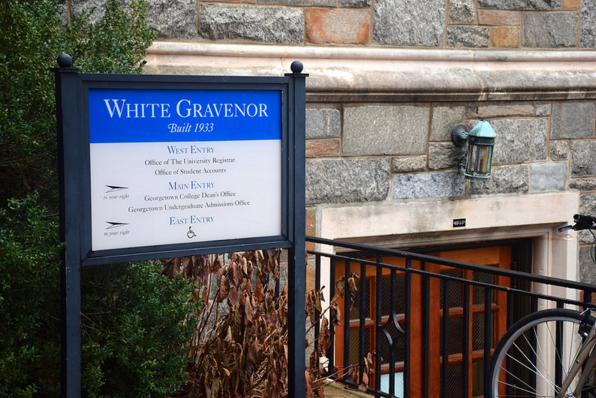In response to an increase in tuition for the 2016-17 academic year, Georgetown undergraduates have begun to call for increased transparency in the university’s budgetary processes and a town hall with administration to discuss students’ questions.
Although the four percent hike in undergraduate tuition from $48,048 last year to $49,968 this year was announced in February 2016 as part of the university’s fiscal plan for 2017, many students were not aware of the boost until they saw their billing statements this summer. This discovery sparked anger over the hike itself, as well as the lack of student involvement in fiscal decision-making among Hoyas.
Enushe Khan (MSB ‘17) and Christopher Fisk (COL ‘17), president and vice-president respectively of the Georgetown University Student Association (GUSA) have recently called for the administration to hold a town hall in order to field students’ questions about the hike. Khan and Fisk commented that the tuition increases were not necessarily unexpected, as the university has been following a five-year financial plan that includes them. Yet, they argued that the largest issue is the absence of clear information as to what students’ tuition actually funds, as well as the need for more student participation in pecuniary processes.
“Our biggest frustration, which we share with students, is the lack of transparency,” said Khan. “When it comes to these budgetary decisions, there is no student involvement. I think that speaks to the big communication gap between these big university decisions and student engagement.”
Fisk added that the GUSA executive has access to approximately the same information about the tuition increases as the general student body does, and therefore cannot sufficiently answer questions to students’ satisfaction.
“In this case, we don’t have answers, at least not answers that are specific enough for the inquiries for the rest of the student body,” said Fisk. “[A town hall] raises an opportunity for the administration to explain their priorities and their motivation for tuition increases. Those increases and those fluctuations could be very well justified.”
The university’s website noted that part of the tuition increase will go towards an expansion of financial aid funding by 8 percent, an improvement Khan says represents the unique values of the university, including the commitment to uphold need-blind, full-need admission to students. Yet Fisk added he would like to ask the administration whether this increase will lead to an expansion of aid to a larger range of economic statuses.
“What will it take for Georgetown to expand the aid that it offers to students who are in the lower-middle class range versus just students like myself who are in the lower income levels?” said Fisk. “I think the most valid frustrations here are from students who are expected to pay more and don’t have as much aid or assistance from the university.”
GUSA Senator Benjamin Baldwin (SFS ‘19) agrees with the idea of a town hall, commenting that the university should not have to be pushed to provide such a venue for students concerns in the first place.
“I think in a lot of ways, the level of transparency that we receive from the university will never be enough,” said Baldwin. “But by holding a town hall, we are taking a step in the right direction [and] hopefully setting a precedent for the future.”
The university has not yet announced whether it will be holding a town hall. However, the Office of the Provost wrote in an e-mail to the Voice that the Provost will be working with students to address the issue.
“Provost Groves has heard the concerns from students regarding Georgetown’s tuition,” wrote Ali Whitmer, chief of staff in the Provost’s office. “He is convening GUSA student leaders with his Student Advisory Committee later this month to discuss more fully.”
Fisk and Khan cautioned against students using other strategies to protest the hikes, such as sit-ins, before a town hall or similar event is held.
“First step is town hall,” said Khan. “Let’s give the university the opportunity to respond directly to the students, let the students have the opportunity to directly question the university, and then let’s move from there.”





